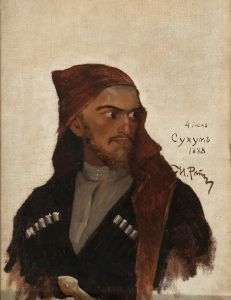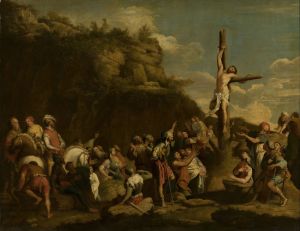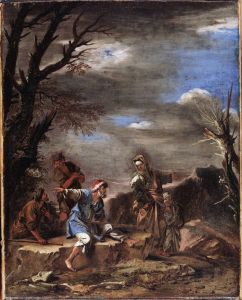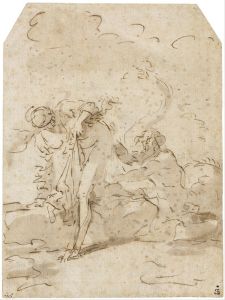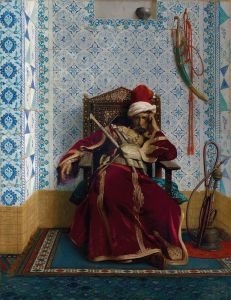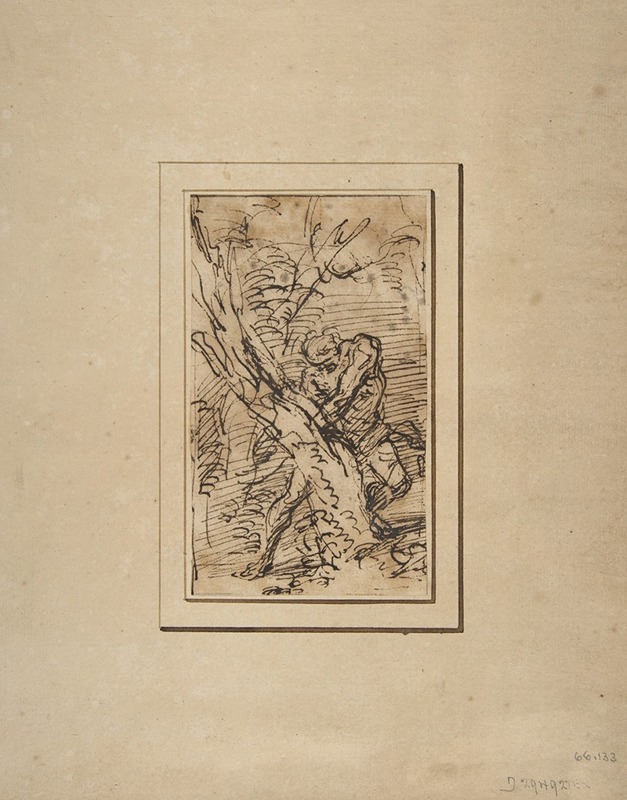
Milo of Crotona
A hand-painted replica of Salvator Rosa’s masterpiece Milo of Crotona, meticulously crafted by professional artists to capture the true essence of the original. Each piece is created with museum-quality canvas and rare mineral pigments, carefully painted by experienced artists with delicate brushstrokes and rich, layered colors to perfectly recreate the texture of the original artwork. Unlike machine-printed reproductions, this hand-painted version brings the painting to life, infused with the artist’s emotions and skill in every stroke. Whether for personal collection or home decoration, it instantly elevates the artistic atmosphere of any space.
Salvator Rosa's "Milo of Crotona" is a notable painting by the Italian Baroque artist, created around 1662-1664. Salvator Rosa (1615-1673) was a versatile artist known for his dramatic landscapes, historical paintings, and portraits, as well as his work as a poet and printmaker. His works often reflect a unique blend of realism and romanticism, characterized by a dramatic use of light and shadow, as well as a penchant for the sublime and the heroic.
The painting "Milo of Crotona" depicts the legendary ancient Greek wrestler Milo, who was renowned for his incredible strength and numerous victories in athletic competitions. Milo of Crotona was a six-time Olympic victor in wrestling during the 6th century BC and became a symbol of physical prowess and human strength. According to legend, Milo's death was as dramatic as his life; he attempted to split a tree with his bare hands, but the tree closed on his hand, trapping him, and he was devoured by wolves.
Rosa's painting captures the moment of Milo's tragic demise. The composition is dynamic and intense, with Milo's muscular form at the center, struggling against the tree that has ensnared him. The artist's use of chiaroscuro—contrasting light and dark—enhances the drama of the scene, highlighting Milo's physical strain and desperation. The background is typically Baroque, with a tumultuous sky and a rugged landscape that adds to the painting's emotional intensity.
Salvator Rosa's interpretation of Milo's story is not just a depiction of physical strength but also a reflection on human vulnerability and the limits of human power. The painting can be seen as a meditation on the themes of hubris and the inevitable decline of even the greatest heroes. Rosa's work often contained philosophical undertones, and "Milo of Crotona" is no exception, inviting viewers to consider the transient nature of strength and glory.
The painting is also significant for its technical execution. Rosa's brushwork is vigorous and expressive, capturing the tension and movement of the scene. His ability to convey emotion through the physicality of his subjects is evident in the strained muscles and contorted expression of Milo, which communicate both his physical struggle and his psychological torment.
"Milo of Crotona" is housed in the Musée des Beaux-Arts de Strasbourg, where it remains an important example of Rosa's artistic legacy. The painting is appreciated not only for its dramatic storytelling and technical skill but also for its ability to engage viewers with its timeless themes. Rosa's work continues to be studied and admired for its contribution to the Baroque movement and its exploration of the human condition through art.
In summary, Salvator Rosa's "Milo of Crotona" is a powerful representation of a classical myth, brought to life through the artist's dramatic style and philosophical depth. It stands as a testament to Rosa's skill as a painter and his ability to convey complex themes through the medium of art.






